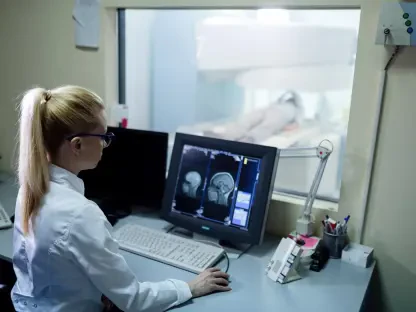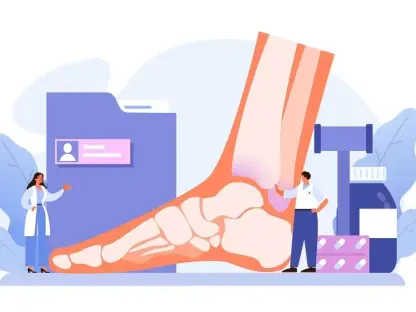I’m thrilled to sit down with Faisal Zain, a trailblazer in healthcare technology with a deep background in medical device manufacturing for diagnostics and treatment. With years of experience driving innovation, Faisal has now turned his expertise toward revolutionizing healthcare through artificial intelligence with his latest venture, Vega Health. In this conversation, we dive into the motivations behind launching Vega Health, the unique challenges of bringing AI to diverse healthcare settings, and how his platform aims to bridge the gap between cutting-edge technology and real-world impact.
How did your journey in healthcare technology lead you to create Vega Health, and what personal or professional experiences inspired this mission?
My journey in healthcare tech, especially in medical device manufacturing, showed me firsthand how transformative technology can be when it’s applied effectively. Over the years, I’ve worked on diagnostic and treatment tools that have saved lives, but I also saw how many promising innovations never reached their full potential due to implementation barriers. That frustration stuck with me. Launching Vega Health felt like the natural next step—to create a platform that not only curates the best AI tools but also ensures they’re accessible to hospitals that might not have the resources to adopt them on their own. It’s personal for me because I’ve seen patients and providers struggle without these solutions, and I believe now is the critical moment to bridge that gap with AI’s rapid advancements.
What gaps in the healthcare system did you notice during your previous roles that shaped Vega Health’s vision?
In my earlier work, I collaborated with leading institutions and saw how larger, well-resourced systems could develop and deploy AI with impressive results. But smaller hospitals or rural health centers often lacked the expertise, funding, or infrastructure to even get started. There was a clear disparity—effective tools existed, but they stayed siloed in the organizations that created them. I also noticed that even when smaller systems wanted to adopt AI, they were overwhelmed by the hype and confusion in the market. Vega Health was born from the idea of leveling the playing field, curating proven solutions, and providing hands-on support to make AI work for everyone, not just the big players.
Who do you envision as the primary users of Vega Health’s platform, and how do you plan to meet their unique needs?
Right now, our focus is on community hospital systems—think multi-hospital networks with significant revenue but without the deep AI expertise of academic medical centers. These are organizations hungry for innovation but often stuck navigating it alone. We’ve also seen interest from both ends of the spectrum, including larger academic centers looking for a unified platform to manage their internal AI solutions, and groups supporting rural or federally qualified health centers. Our approach is tailored—we’re not just selling tools; we’re partnering with these systems to understand their specific clinical and operational goals, then matching them with the right technology and ongoing support to ensure success.
Can you walk us through how Vega Health selects the AI tools for its marketplace?
We start with a rigorous curation process, drawing on over a decade of experience evaluating healthcare technology. For us, a “best-in-class” tool must be proven safe, effective, and relevant to real-world hospital settings like emergency departments or intensive care units. Initially, we’re bringing about a dozen solutions from trusted sources, including those developed at leading institutions, and we’re securing non-exclusive distribution rights with developers to expand our offerings. Our goal isn’t just quantity—it’s about quality and fit. We’re also open to partnering with innovators across the field to ensure we’re always offering the most impactful tools for our customers.
How does Vega Health support health systems in actually implementing these AI tools once they’ve chosen them?
Implementation is where many AI projects stumble, so we’ve built a comprehensive support system. First, we work closely with health systems to assess their specific needs—whether it’s improving patient outcomes in the ICU or streamlining operations in the ER—and help them select the right tools from our marketplace. Then, we provide a data engineering platform that integrates seamlessly behind their firewall to host these applications. Post-implementation, our team is hands-on, offering guidance to ensure the tools are embedded into workflows effectively. It’s not a one-and-done deal; we’re there to troubleshoot and adapt as needed.
What’s your approach to monitoring the performance of these AI tools after they’re deployed in a hospital?
Monitoring is a cornerstone of what we do at Vega Health, and we focus on three key areas. First, we track technical performance—ensuring the tool’s accuracy or other metrics meet expectations. Second, we measure adoption by frontline staff because even the best technology fails if it’s not used. We look at user actions and interventions to confirm the tool is changing behavior as intended. Finally, we evaluate outcomes—whether it’s reducing readmissions or improving efficiency—and report back to the health system on what’s working or what needs adjustment. This unbiased feedback loop helps protect innovators while supporting hospitals in maximizing value from their AI investments.
How do you ensure that the AI tools are making a tangible difference in patient care or hospital operations?
Making a real difference is our ultimate goal, so we tie our monitoring directly to measurable outcomes. For patient care, we might look at metrics like reduced hospital stays or better diagnostic accuracy. For operations, we assess efficiency gains, such as shorter wait times or optimized resource use. We isolate these outcomes from technical performance and adoption data to pinpoint where the impact is coming from—or where it’s lacking. If a tool isn’t delivering, we’re transparent about it and work with the health system to pivot. Our role is to diffuse not just the tech but also the best practices around it, so when we see success in one place, we can replicate it elsewhere.
Looking ahead, what is your forecast for the role of AI in healthcare over the next decade?
I believe AI will become a fundamental part of healthcare delivery in the next decade, moving from a novelty to a standard of care. We’ll see it embedded in everything from diagnostics to personalized treatment plans, especially as data integration improves. The challenge will be equity—ensuring that smaller or under-resourced systems aren’t left behind. I think platforms like Vega Health will play a pivotal role in democratizing access, while regulatory frameworks will evolve to balance innovation with safety. My hope is that in ten years, AI will be as ubiquitous in healthcare as electronic records are today, but only if we prioritize scalable, practical solutions over hype.









